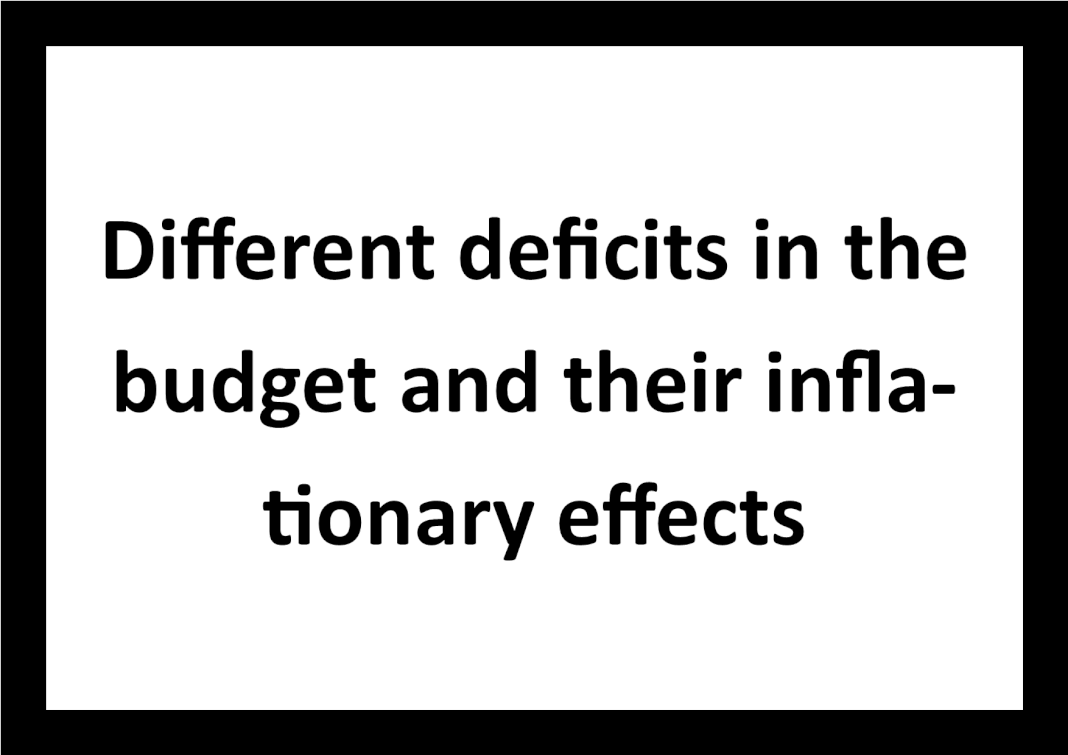Following are the major deficit types in the budget and their implications. Some of the deficits (budget deficit and monetised fiscal deficit) are not there in India at present.
| Deficit type | Economic effects |
| Revenue deficit (RD) | Implies that day to day government receipts are not enough to finance the day to day government expenditure. Here, there are rising current expenditures. To finance the revenue deficit, the Government should have a capital surplus (through borrowings). This will make the productive capital expenditure lower than capital receipts. RD is a violation of the golden rule. Higher RD will reduce the quality of government spending and will increase the debt burden of the Government indirectly. |
| Fiscal Deficit (FD) | Shows borrowings of the Government to run the budget. If the FD is caused by RD, borrowings will be used to finance the day-to-day expenditure of the Government. This is undesirable. FD results in future interest payments. It also adds to inflation, crowding out effect, upward pressure on the market interest rate, increase in the yield of government securities etc. But the inflation effect of FD will be lower than BD and MFD. Higher FD increases the yield of government securities as we saw in the context of the 2022 budget. |
| Budget Deficit (BD) | Printing of currency to finance the budget. This is highly inflationary (the most inflationary deficit). This practice is not existing in India right now. |
| Monetised Fiscal Deficit (MFD) | Indicate borrowings by the Government from the RBI to run the budget. Such borrowings create inflation. When the money is paid back to the RBI, the inflation effect may be reduced. Still, MFD is less inflationary compared to BD. If the money is not paid back to the RBI, it will be as inflationary as the BD. |
| Primary Deficit (PD) | Shows the amount of government borrowing that is used to finance expenditure over and above interest payments. Here, PD means the amount of non-interest expenditure financed through borrowing o. Lower PD is desirable as it reflects less financing of other expenditures (other than interest payments) using borrowed money. Do not misunderstand that borrowing should be used to finance interest payments. Rather if the Government continuously uses borrowings to finance other expenditures as well, the future debt burden will go up. |
| Effective Revenue Deficit | Shows that some of the RD are productive. Here, some of the revenue expenditure are spent for asset generation (indicated as Grants in Aid for creation of capital assets) . In the Budget 2022, the government has added this asset creating revenue expenditure under effective capital expenditure. |










